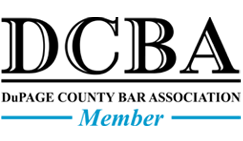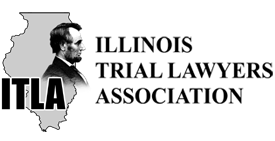Why Does Distracted Driving Increase the Likelihood of Car Accidents?
 Every day, drivers take to the roads with the intention of getting from Point A to Point B without problems. Most of the time, people are able to do so successfully. Unfortunately, there are always car accidents waiting to happen, and one of the biggest dangers that currently affects people is distracted driving. In 2020, more than 3,000 people were killed in the U.S. as a result of distracted driving, according to the National Highway Traffic Safety Administration. While those numbers are staggering, they only tell part of the story. For every fatal car accident caused by distracted driving, there are countless other accidents that result in serious injuries, property damage, and emotional trauma.
Every day, drivers take to the roads with the intention of getting from Point A to Point B without problems. Most of the time, people are able to do so successfully. Unfortunately, there are always car accidents waiting to happen, and one of the biggest dangers that currently affects people is distracted driving. In 2020, more than 3,000 people were killed in the U.S. as a result of distracted driving, according to the National Highway Traffic Safety Administration. While those numbers are staggering, they only tell part of the story. For every fatal car accident caused by distracted driving, there are countless other accidents that result in serious injuries, property damage, and emotional trauma.
Distracted driving is any activity that takes a driver's attention away from the task of driving. Distractions can come in many forms, but they can broadly be divided into three categories: visual distractions, manual distractions, and cognitive distractions. All of these distractions can be dangerous, but in many cases, drivers will engage in multiple types of distractions at the same time, and this can greatly increase the chances that they will become involved in accidents. Car accident victims will need to take steps to make sure a negligent driver who caused an accident due to distracted driving will be held liable for their damages.
Visual Distractions
These distractions cause a driver to take their eyes away from the road. Obviously, this is extremely dangerous, because it means a person is not paying attention to what is happening around them. They may fail to notice important details, such as a vehicle that has slowed down suddenly, a pedestrian who has entered a crosswalk, or an obstacle in the road. This will give them less time to react, and they may be unable to slow down, swerve, or take other actions to avoid an accident. Common examples of visual distractions include reading text messages, looking at a navigation system, paying attention to a billboard near the road, or "rubbernecking" to get a view of the scene of an accident.
Manual Distractions
These distractions cause a driver to take their hands off the steering wheel. This type of distraction is also very dangerous, because a driver will not fully be in control of their vehicle. This will affect their ability to respond in time to issues that could lead to an accident, and as they scramble to regain control, they may collide with other vehicles or pedestrians. Common examples of manual distractions include typing text messages or emails on a phone, eating and drinking, or adjusting the radio or other controls inside the car.
Cognitive Distractions
These distractions include anything that takes a driver's mind away from the act of operating their vehicle. Even if a person is looking at the road and has both hands on the steering wheel, they may not be paying 100 percent attention to driving if their mind is elsewhere. This may cause them to miss important information or be unable to respond correctly to traffic changes or other dangers. Common examples of cognitive distractions include daydreaming, talking to passengers, or making phone calls while using hands-free technology.
Dangers of Distracted Driving
All three types of distractions are dangerous, and they can have devastating consequences. Visual and manual distractions can be especially dangerous, because they will affect a driver's ability to notice and respond to changing conditions on the road. Activities that combine all three types of distractions, such as reading and responding to text messages, can greatly increase the likelihood that a driver will be involved in an accident.
Contact Our Bensenville Distracted Driving Accident Attorneys
If you have been injured in a car accident caused by a distracted driver, an experienced Elmhurst car accident lawyer at Kaiser Law can help you pursue compensation for your injuries and damages. We will make sure the driver who acted negligently will be held responsible for causing you harm. Call us today at 630-274-4400 to arrange a free consultation.
Sources:
https://www.nhtsa.gov/risky-driving/distracted-driving
https://www.cdc.gov/transportationsafety/distracted_driving/index.html
https://exchange.aaa.com/safety/distracted-driving/the-risks-of-distracted-driving/

 630-274-4400
630-274-4400












